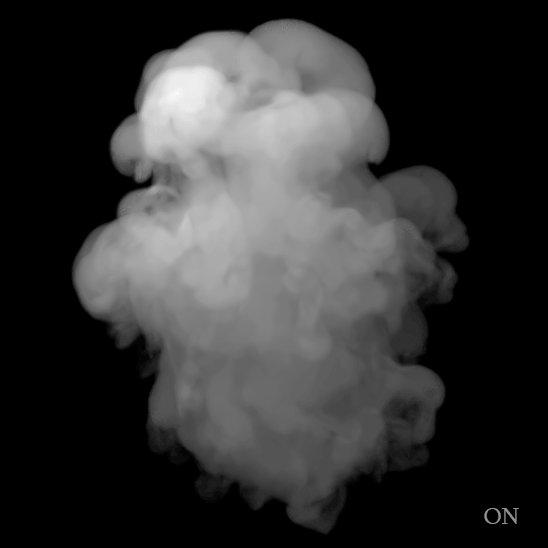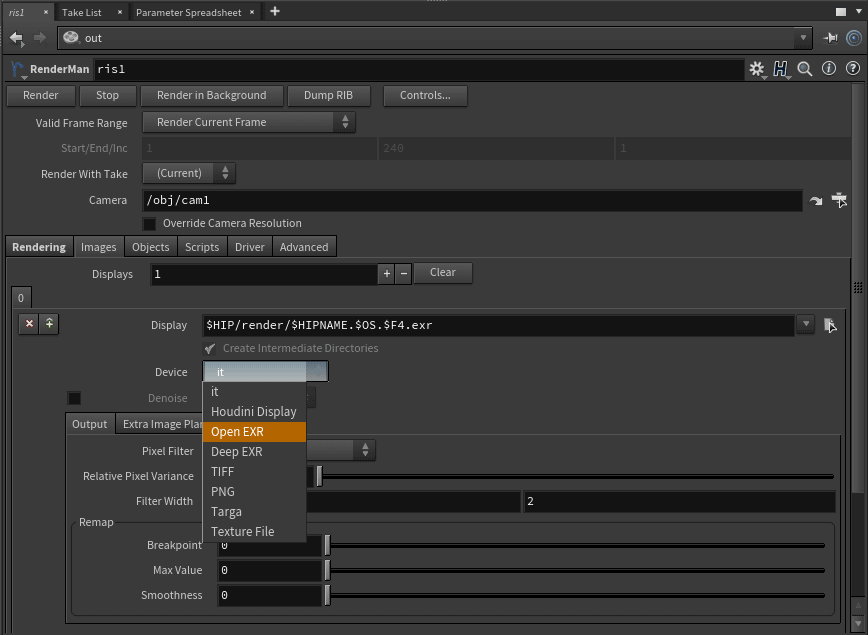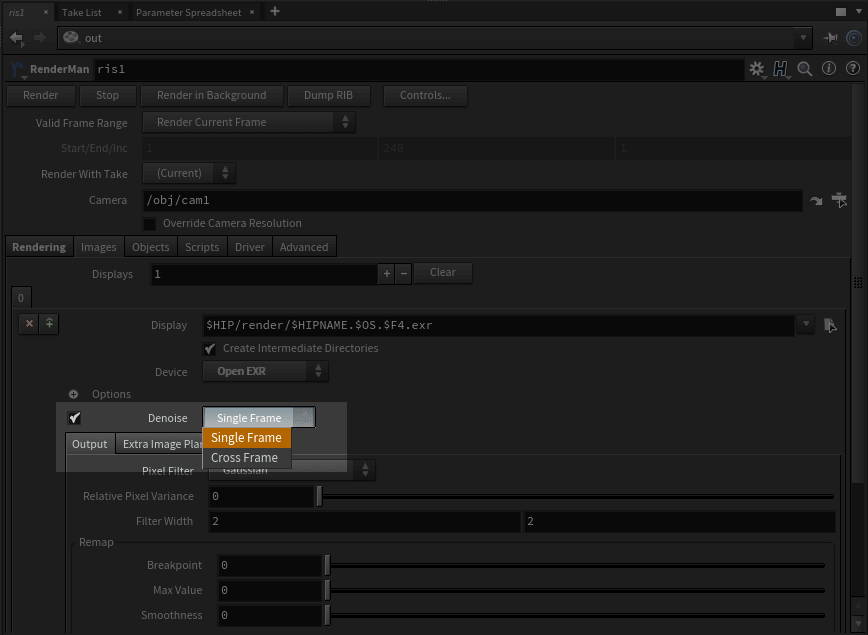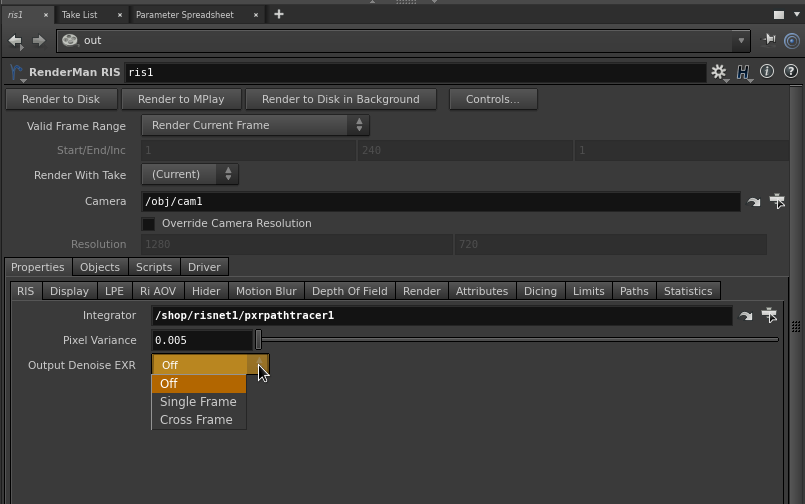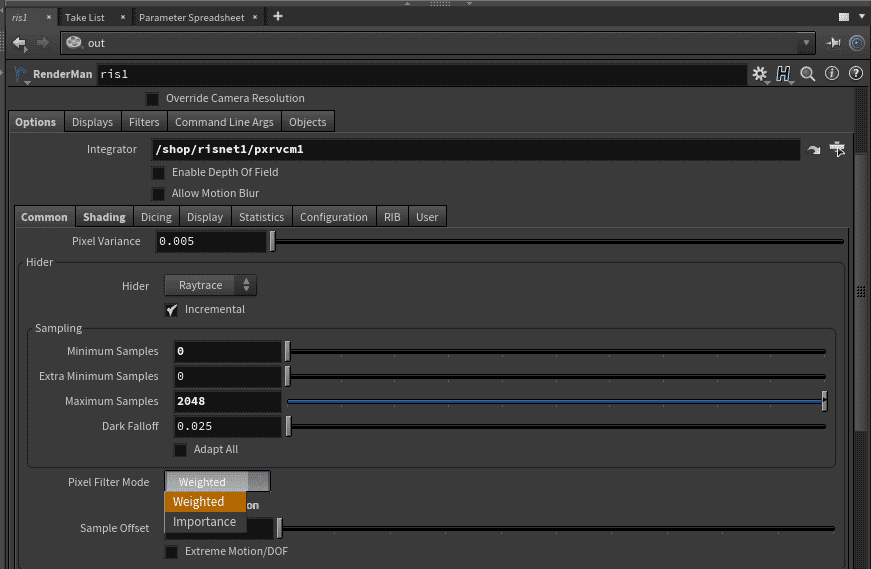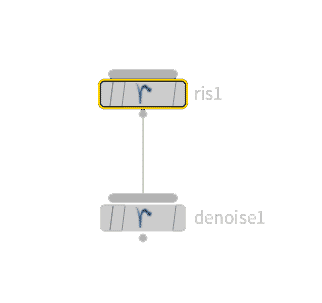| Note |
|---|
This workflow may differ in the completed product |
| Info |
|---|
See Denoise Workflow for more information. |
To output the multichannel EXR for the denoising workflow, select :
- ROP node > Displays > Display Device > OpenEXR
- Select Single Frame or Cross Frame in
...
- ROP's Display Tab at the bottom. This will auto-select the appropriate AOVs (only if you followed the step above)
Properties | RIS: Output Denoise EXR.
| Warning |
|---|
Additionally, you must set the set the RenderMan RIS ROP's Properties | Hider: Pixel Filter Mode to importance Options > Common > Pixel Filter mode to Importance. If this is not set, it will introduce artifacts during the denoise process. |
...
This setting is also required to the use the Nvidia Denoise preview in "it" |
- Create a new Denoise ROP node
- Connect the original RIS ROP node from the above steps to the Denoise ROP
You have two choices in the Denoise ROP node of importance:
- Denoise: This uses the Houdini process to render and denoise the EXR and will lock Houdini
- Denoise in Background: This creates a new process to render and denoise while leaving Houdini free
For users wanting to output AOVs for Denoising manually (for the purpose of rendering separate EXRs and not a multi-channel EXR), you can find the AOV information on the Denoise Workflowmanually select the Denoise AOVs under Displays, be sure to use the Importance Sample Filter as described at the beginning of the document. Keep in mind the Denoise feature requires a multi-channel EXR to work.
...

